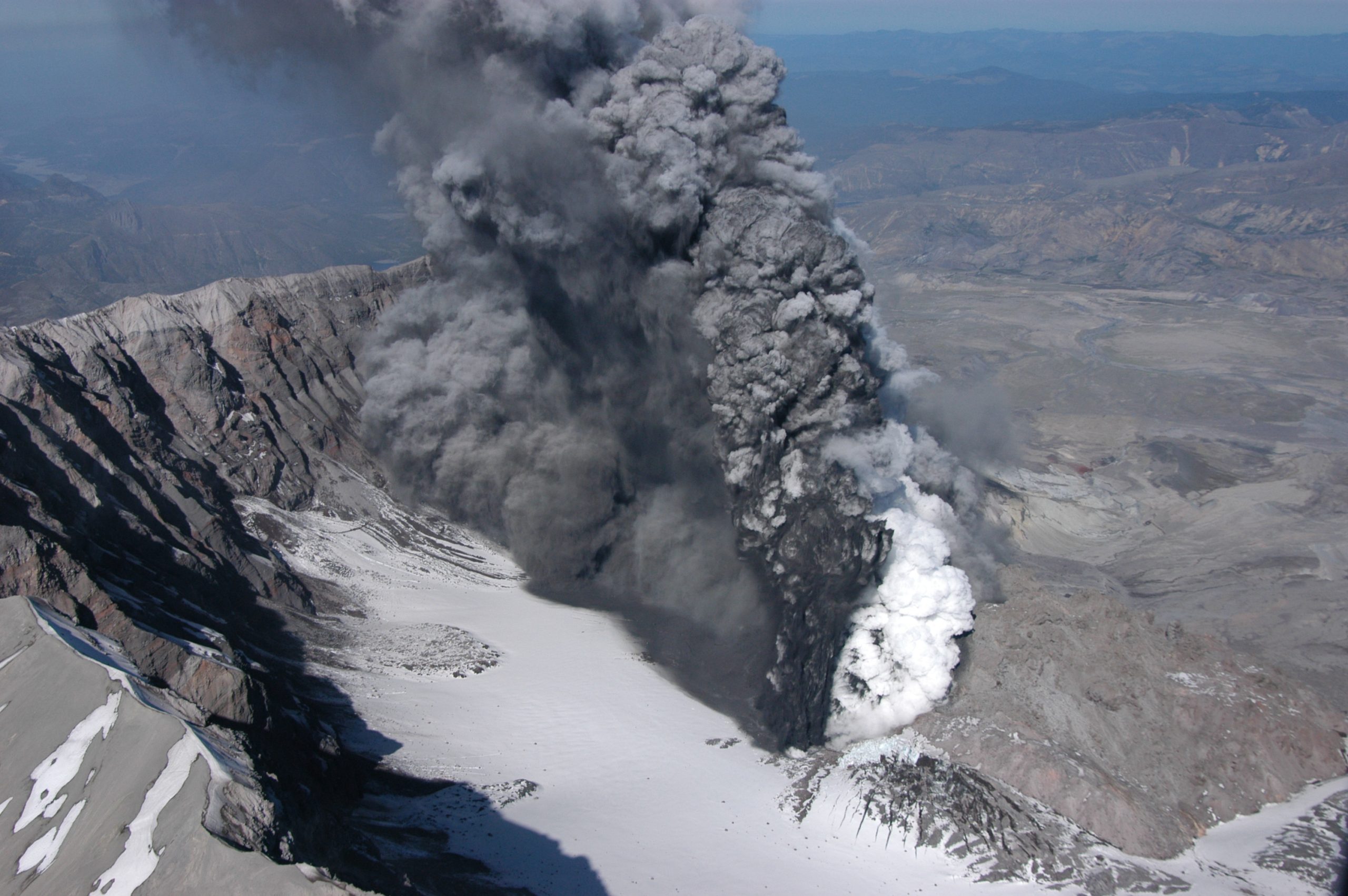42 for Loowit’s 42nd vol. 7: Reprise

There was life in the old girl yet.
To be fair, though, Loowit (Mount St. Helens) isn’t very old as far as volcanoes go. So when she rumbled awake in late September of 2004, volcanologists weren’t terribly surprised. She’d slumbered for less than 20 years after her 80s eruptive sequence, but it wasn’t shocking to see magma on the move again.
Her prompt eruption on October 1st signalled a new phase of dome building. And this time, we had better cameras, better monitoring equipment, and the plans in place to do some serious monitoring.

Dome within Mount St. Helens’ crater is hot and glowing as it grows, viewed from Johnston Ridge Observatory (JRO), with base of small steam and ash plume. 11/4/2004. Caption and image credit: USGS
She put on a beautiful show.

Plume from November 11, 2004 eruption of Mount St. Helens, looking into the sun. Caption and image credit: USGS
Unlike the 1980 sequence, this one was more constructive than destructive, and largely confined to the crater. Sometimes, you couldn’t even tell she was wakeful.

Mount St. Helens and Mount Rainier, aerial view toward the north. 12/11/2004. Caption and image credit: USGS
Other times, the plume of steam and gas announced she was very busy indeed, even on days when she wasn’t jetting ash thousands of feet into the sky.

South-facing aerial view of Mount St. Helens with Mount Hood (left) and Mount Jefferson (right) on the horizon. June 8, 2005. Caption and image credit: USGS
Blades of thick gray lava pushed up through the dome, dramatic and intriguing. This was happening right when I moved up here!

Helicopter flying toward lava spine at Mount St. Helens to collect rocks—note the “Jaws” collector hanging underneath. April 28, 2007. Caption and image credit: USGS
Eventually, she settled back into slumber. But the networks monitoring her never sleep. We see swarms of earthquakes that tell us that her magma chamber is rechanging. And it’s only a matter of time before “One of the most active and most explosive volcanoes in the Cascade Range” resumes her reconstruction project.

Helicopter dropping off monitoring equipment at Mount St. Helens, Washington. 8/15/2009. Caption and image credit: USGS
I’m hoping I’ll be right there when she does!
Featured image: Plume/crater image of Mount St. Helens October 1, 2004 at 12:08:38 PDT. Caption and image credit: USGS

Rosetta Stones and Dana Hunter’s Unconformity wouldn’t be possible without you! If you like my content, there are many ways to show your support.
This website is a member of the Amazon Affiliates program. I get a small commission when you use my affiliate link to make a purchase.
Thank you so much for your support!



